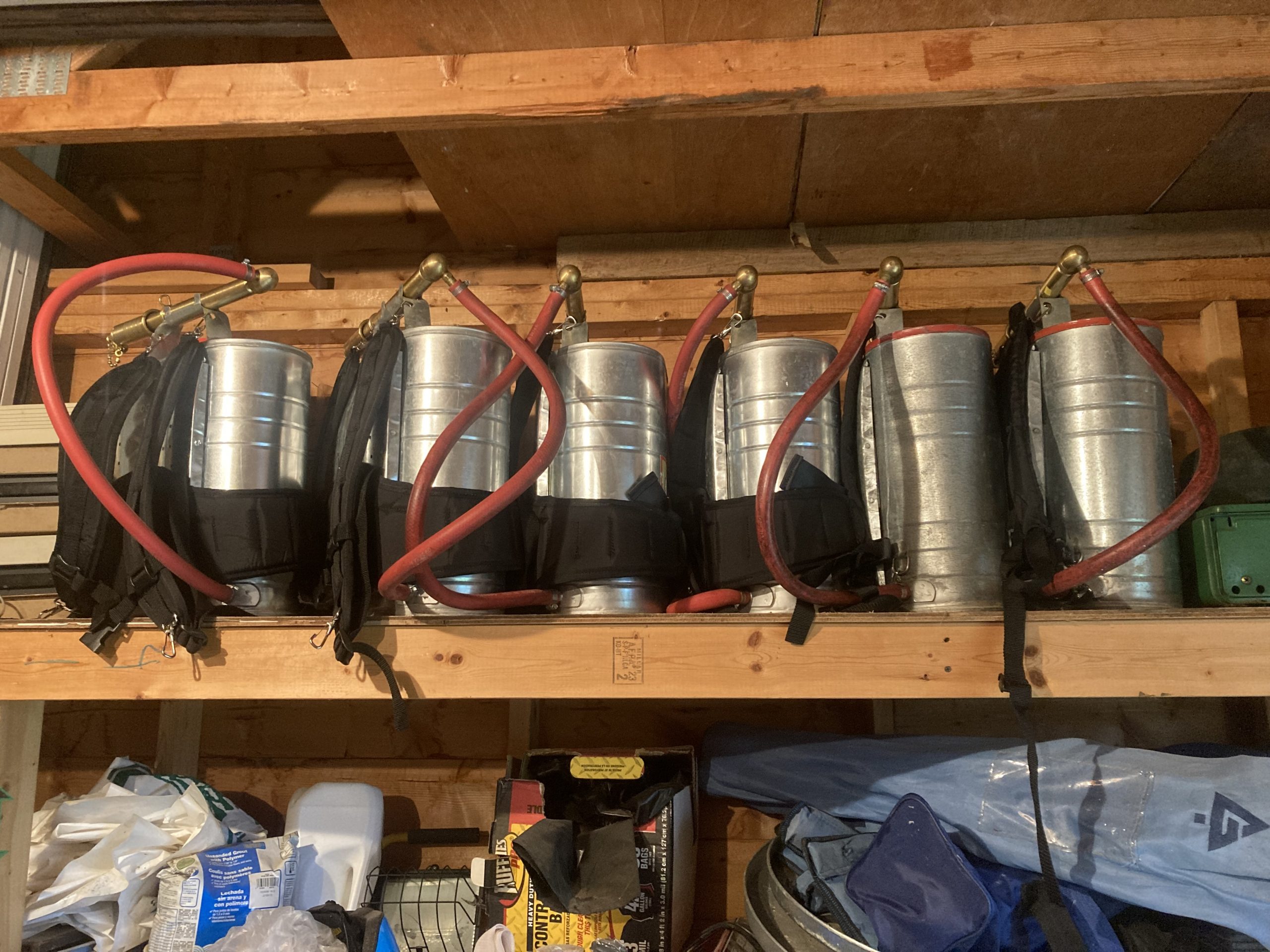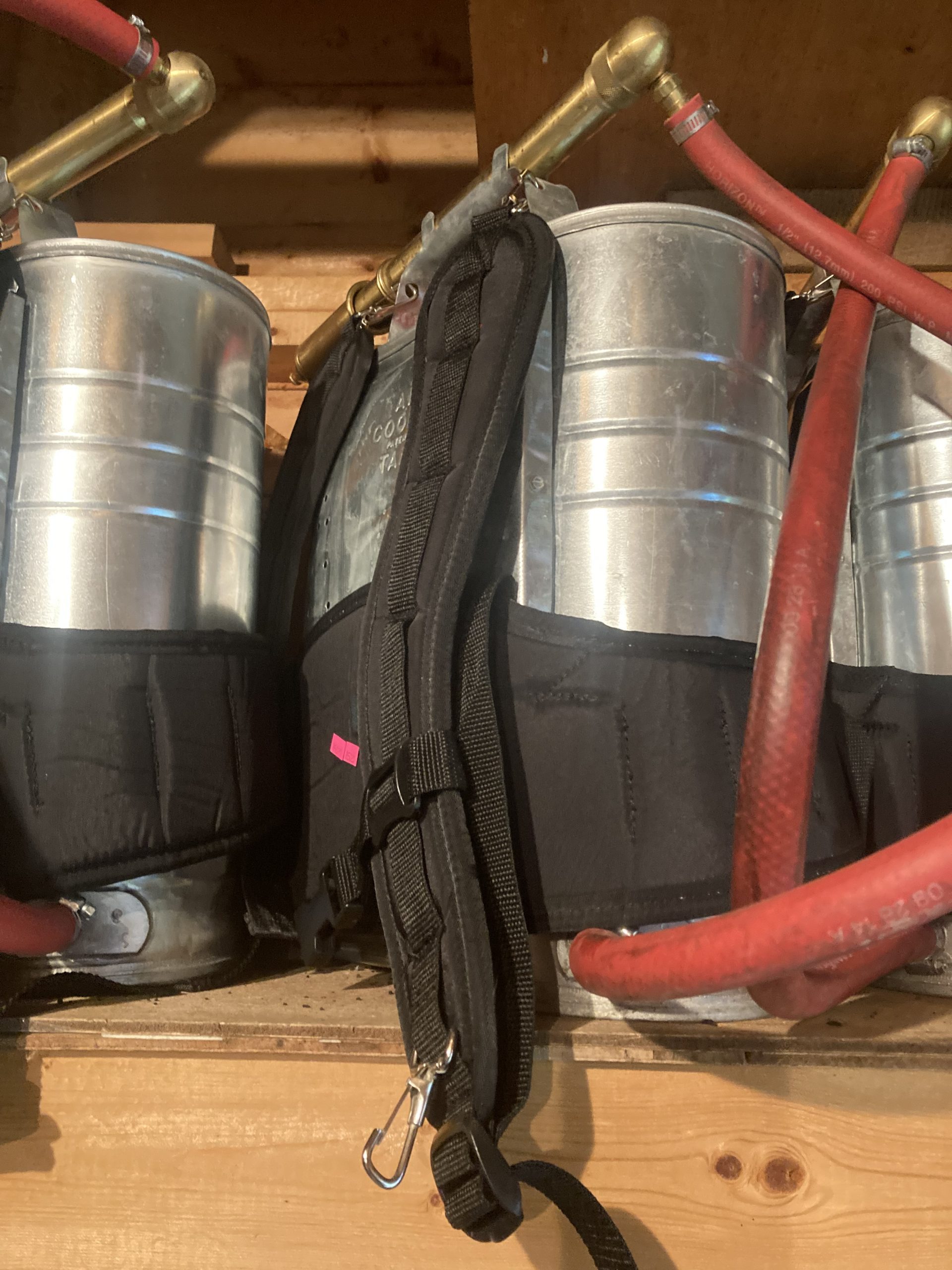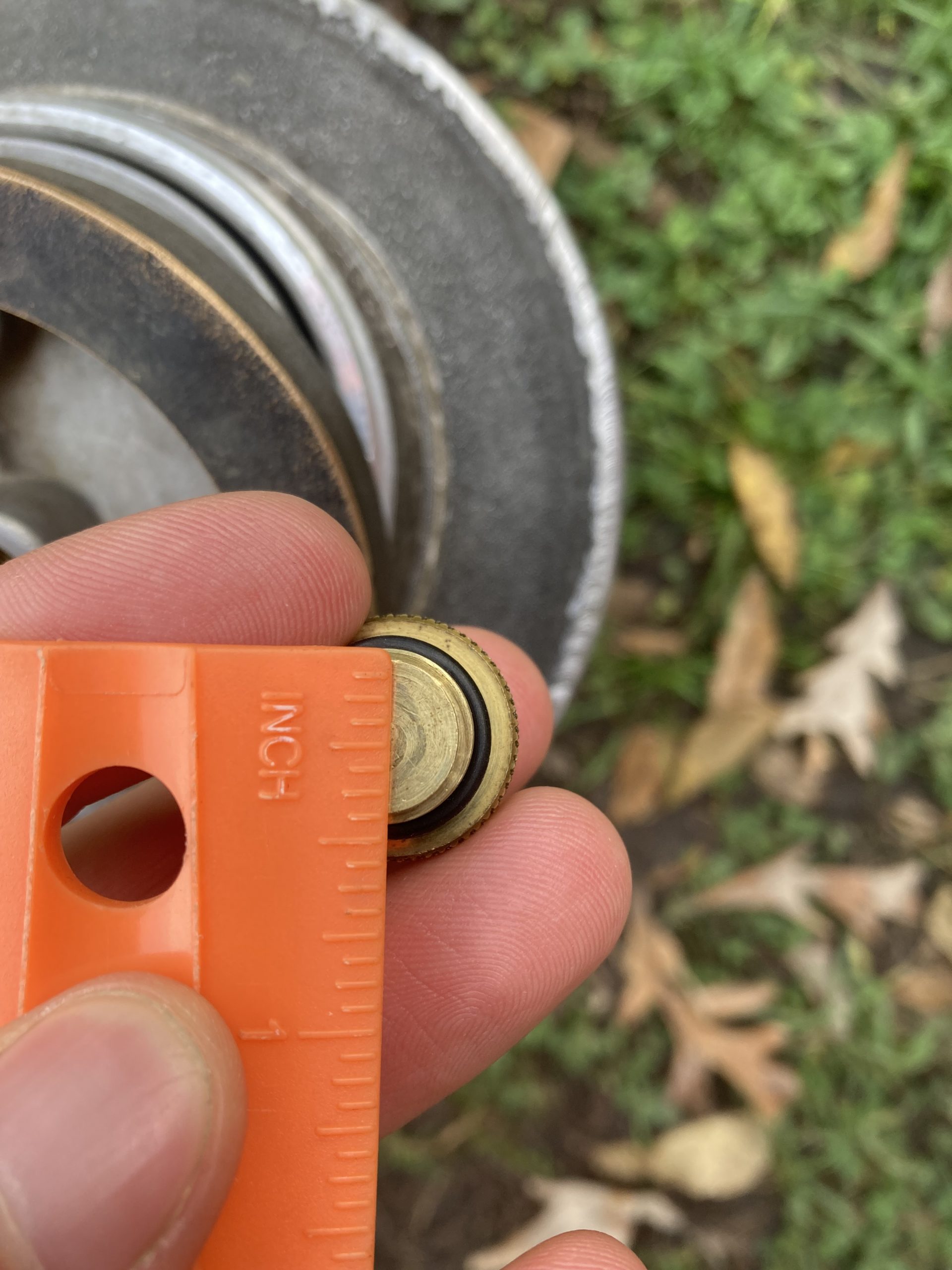With a busy burn season ahead of us, I took some time in late October to maintain the equipment we use for prescribed burns. During a hectic spring 2021 burn season, we encountered several issues. A handful of 5-gallon backpack pumps were not functioning well and one of our drip torches was constantly acting up (especially while using the leftover “spicy” fuel mix).
During spring 2021, I noticed two of our 5-gallon backpack pumps had cracked pump cylinders and would need to be replaced. I tried applying plumber’s epoxy to the cracked cylinders last spring but the pressure created by the pump inevitably caused this epoxy to fail. Over the summer, we purchased replacement outer cylinders for the backpack pump assemblies. I rebuilt the pump assemblies and installed these cylinders last week. The pumps seems to be working properly now. We should be very diligent about making sure all water has been expelled from tanks and pump assemblies prior to winter storage to avoid cracked cylinders.
We also purchased four harnesses and two pairs of padded straps for our 5-gallon pumps. These provide a welcome upgrade over the notoriously uncomfortable thin straps that come with the backpack pumps. We now should have 6 fully functional (and comfortable!) backpack pumps for burning.
Rebuilding the troublesome drip torch was a priority for me. After inspecting the torch, I realized one if not the problem was a badly deteriorating collar gasket (the big O-ring). I replaced this gasket along with the smaller O-ring on the discharge plug. Pro-tip: Forestry Suppliers sells discharge plug O-rings for drip torches but the ones they sell are too large. I found the #9 O-rings (5/8 in. outer diameter x 7/16 in. inner diameter x 3/32 in. wall) that are readily available at just about any hardware store work much better. I also replaced the breather valve assembly on this drip torch.
This brings up a more general point about the importance of maintaining burn equipment. At the beginning of the burn season we should:
- Check to make sure all 5-gallon backpack pumps are functioning properly
- Check to make sure gasket is intact and installed in top lid
- Inspect pump cylinder for cracks
- Inspect nozzle and make sure it is clear of debris
- Install paper clip used to clear nozzle obstructions
- Ensure nozzle is set on adapter with two holes (single hole adapter not very effective or water-efficient for extinguishing grass fires)
- Fill each tank with water and test pump
- Check drip torches
- Inspect integrity of collar gasket, replace immediately if damaged
- Inspect integrity of discharge plug O-ring, replace if damaged
- Check for obstructions or debris that could impede flow of fuel
- Rakes and swatters
- Locate metal rakes and swatters
- Check integrity of the swatters (these can melt and deteriorate making them ineffective)
- Note any tools that need replacing
- Kestrel
- Locate Kestrel 3500FW and test unit/check battery
- Locate or purchase additional (new) battery
At the end of the season:
- 5-gallon backpack pumps
- Ensure all water and excess moisture has been expelled from 5-gallon pumps
- Inspect integrity of gasket on tank lid
- Drip torch
- If empty, use paper towel to clean interior and remove debris
- Check integrity of collar gasket and discharge plug O-rings
- Return rakes and swatters to G3
- Hang Kestrel 3500FW from wooden dowel above shelf between main room and bathroom in Hjelm




Leave a Reply